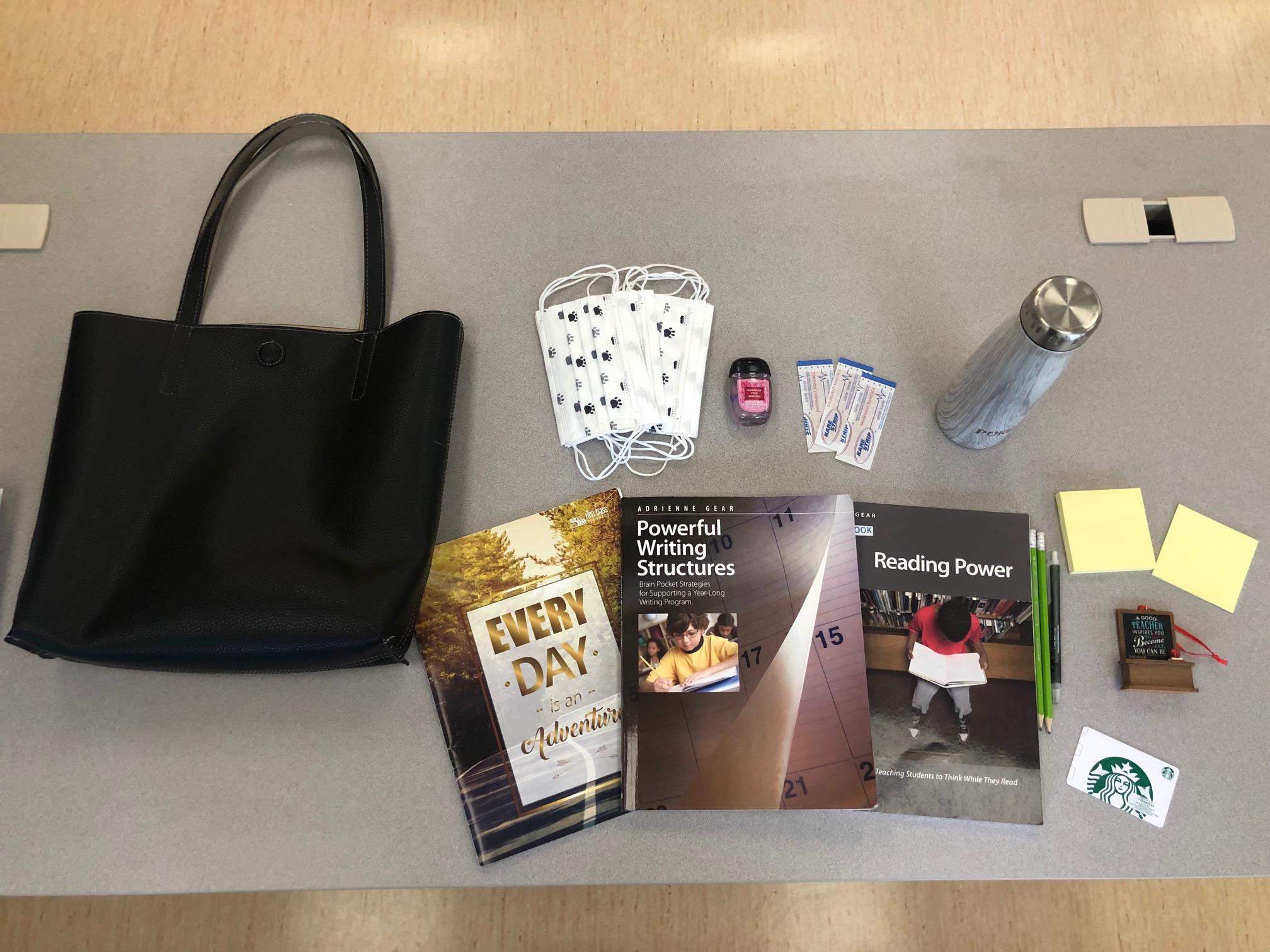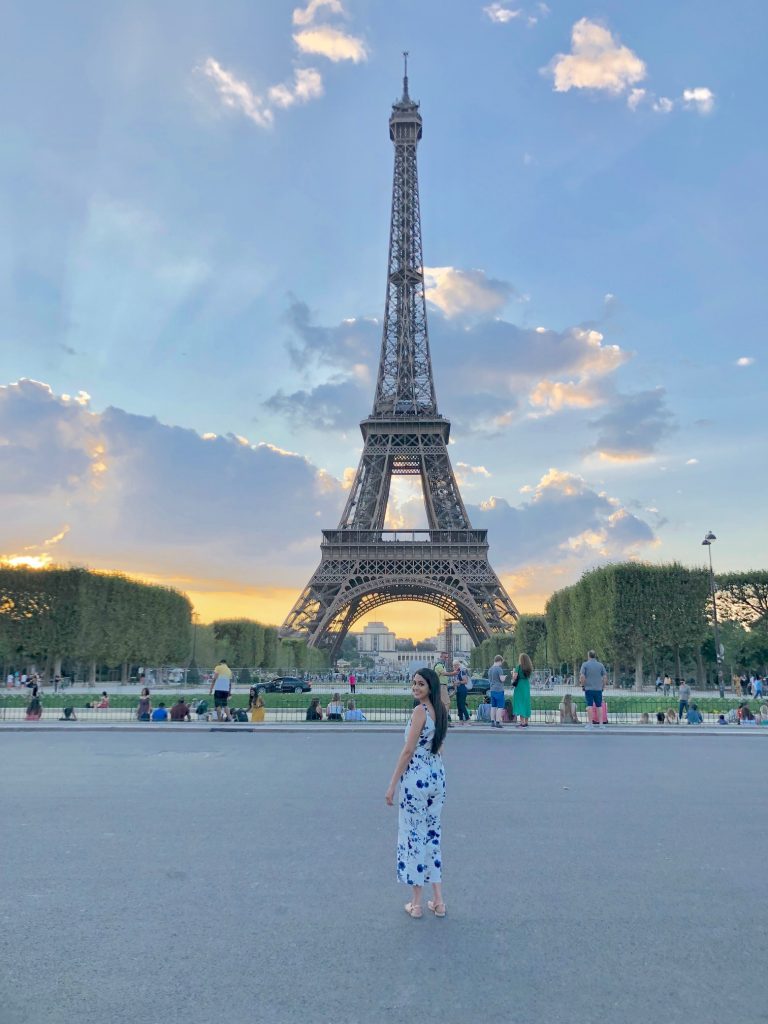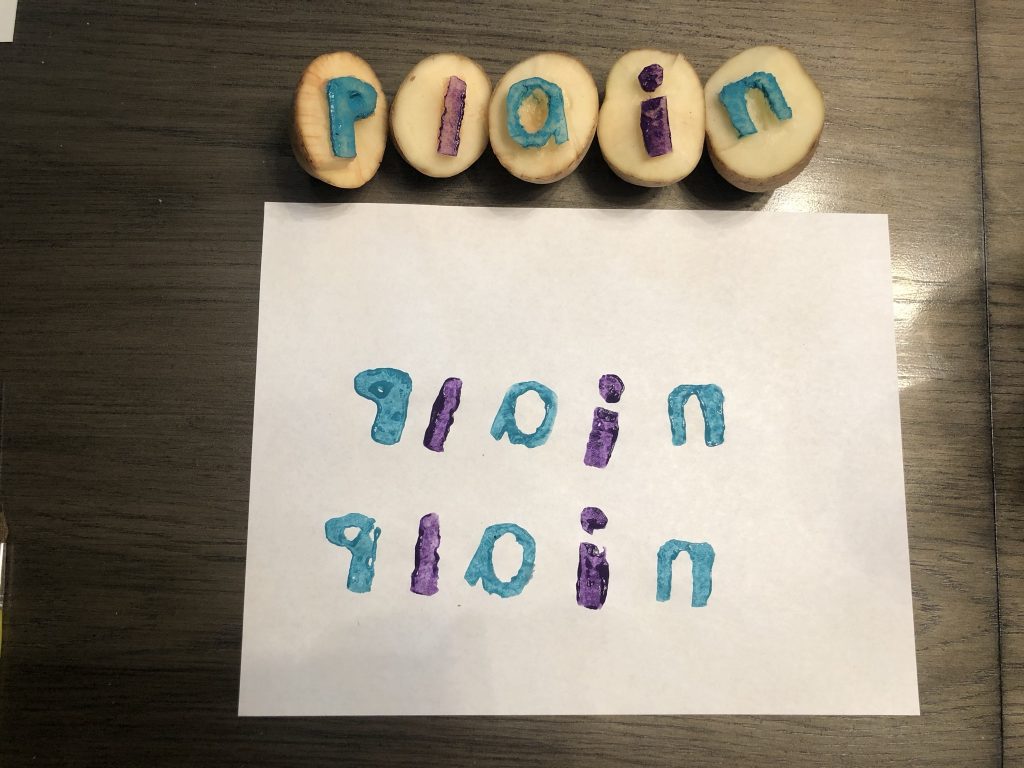
Hello! I’m Ravneet Sandhu a second-grade teacher residing in Vancouver BC. I am currently taking my seventh and eighth courses of the MET program. For this exercise, I chose to share the bag that accompanies me to work each day.
My bag consists of the following items: Laptop, planner, writing utensils, post-it notes, Adrienne Gear’s Reading and Writing Power, a water bottle, extra masks, hand sanitizer, Band-Aids, a Starbucks gift card, and an ornament.
This bag carries the items that I use on a daily basis. Work and school comprise a large part of my life. The writing utensils, planner and post-it notes serve as reminders to help me stay organized throughout the week. My laptop is currently my most prized possession. As a teacher facilitating the blended program (a combination of face-to-face and online learning), I use my laptop to engage students virtually. Not to mention that I use it to access my courses on Canvas and work through assignments. My water bottle reminds me to stay hydrated and to take breaks during my work day as my screen time can become quite excessive. In my bag, I also keep some safety items; band-aids for paper cuts, hand sanitizer and extra masks, which are more recent additions that have helped me stay safe during our COVID-19 pandemic. Lately, I have been pulling lessons from Adrienne Gear texts to support my students with literacy. Lastly, I have a Christmas ornament in my bag. This ornament was the first gift that I ever received from a student. The quote on this ornament resonates with me and on rough days it reminds me why I began teaching in the first place. Lastly, I carry a Starbucks gift card which gets me through my busy tiresome mornings.
My bag has changed quite a bit in the past 10 years. It used to be a backpack full of heavy textbooks, notebooks, a bus pass, and some snacks. My school bag has now transformed into a work bag. The few items that have remained constant include my laptop, water bottle, planner, and writing utensils.
My bag shows that I engage with language and communication using both digital and print literacies. My laptop indicates the presence of digital literacy. My planner, post-it-notes, writing utensils, and Adrienne Gear resources suggest the use of print literacy. To me a text is a symbol that conveys a particular meaning to a reader or viewer. If you look inside my planner, you would see an asterisk (a symbol) beside certain items indicating that they are of high importance, compared to other items. My Starbucks gift card signifies a payment system. Overall, I think that the items in my bag point to an individual living in a fairly busy, technology-oriented world.
An archeologist may take time to identify the relationship between objects in my bag. Even just a few years ago, I wouldn’t be able to connect the dots between the masks and sanitizer that are in the bag. These items have become an important part of our daily lives and culture. Thus, an archeologist would need to dive deeper to discover the purpose of some of these items.
A stranger living in the present-day world would easily be able to sift through the contents of my bag and decode what I do for work. I think these contents indicate that I am a responsible individual who works hard. Further, they point to some of my habits. These items serve as evidence that I am a neat, organized individual who pays close attention to detail. Something that this bag fails to reveal is my passion for travel. So, I’ve included a photograph of myself during a trip to Europe. I enjoy meeting new people, experiencing different cultures and lifestyles and engaging in new activities.




